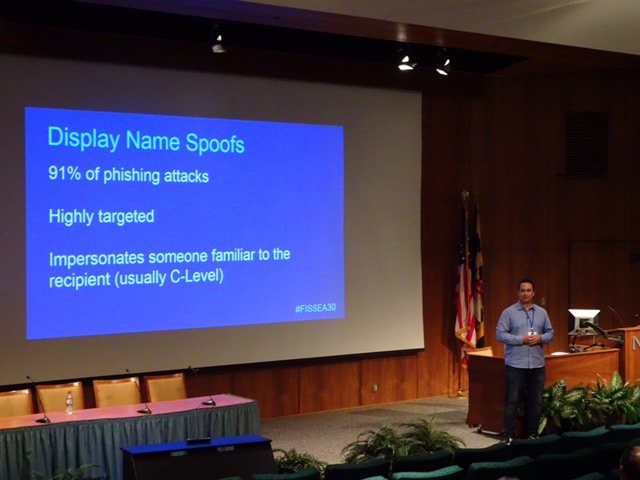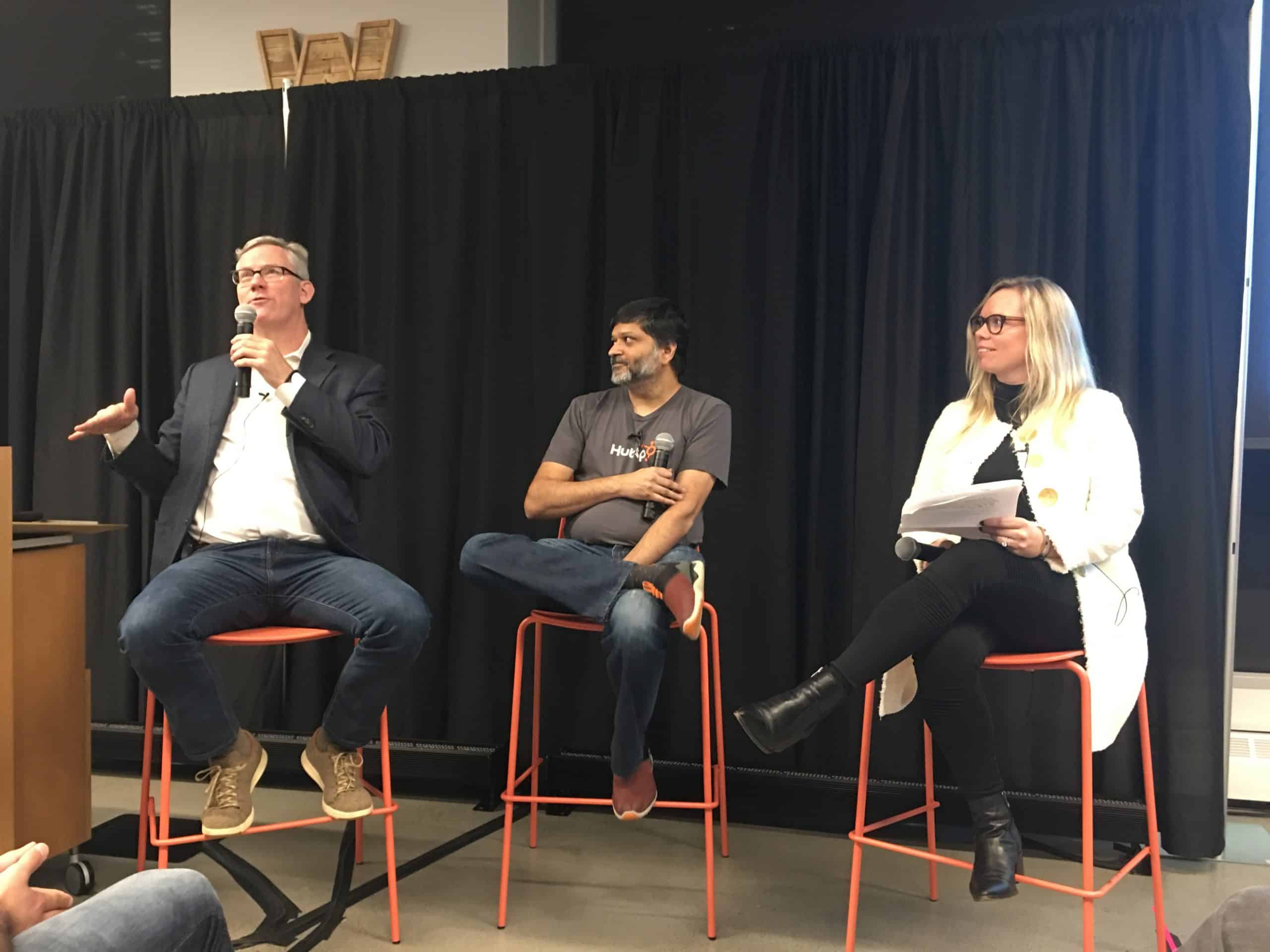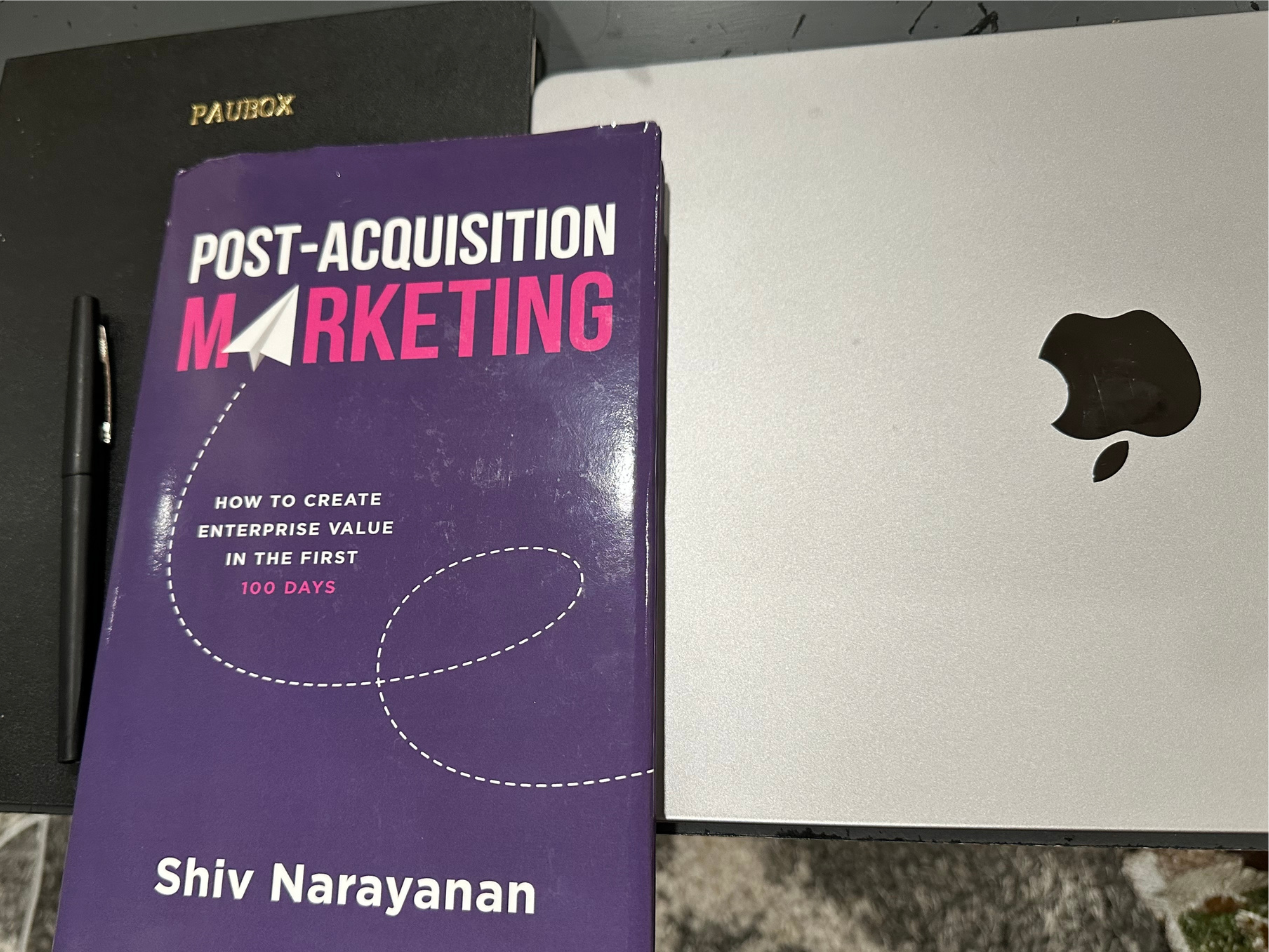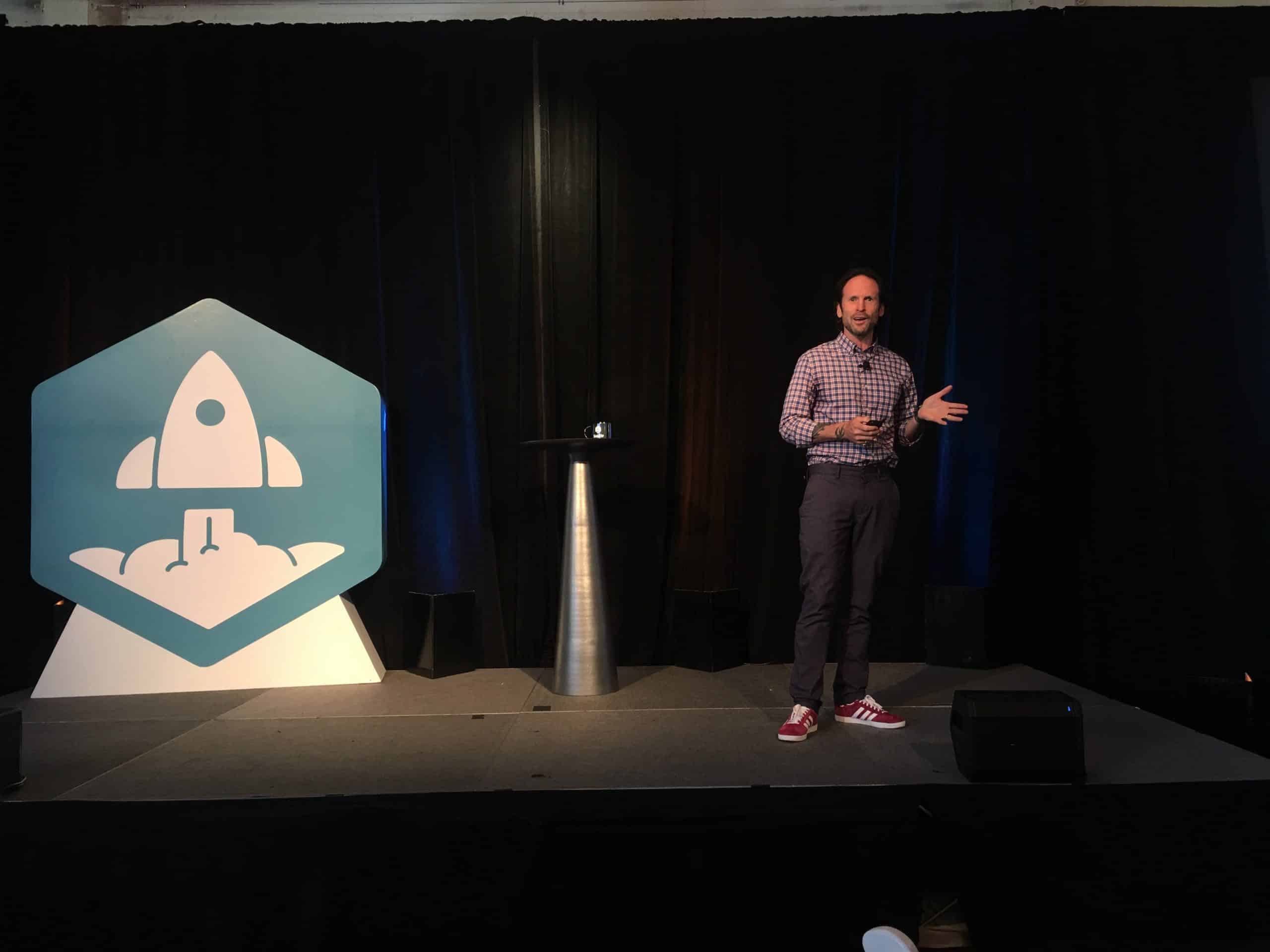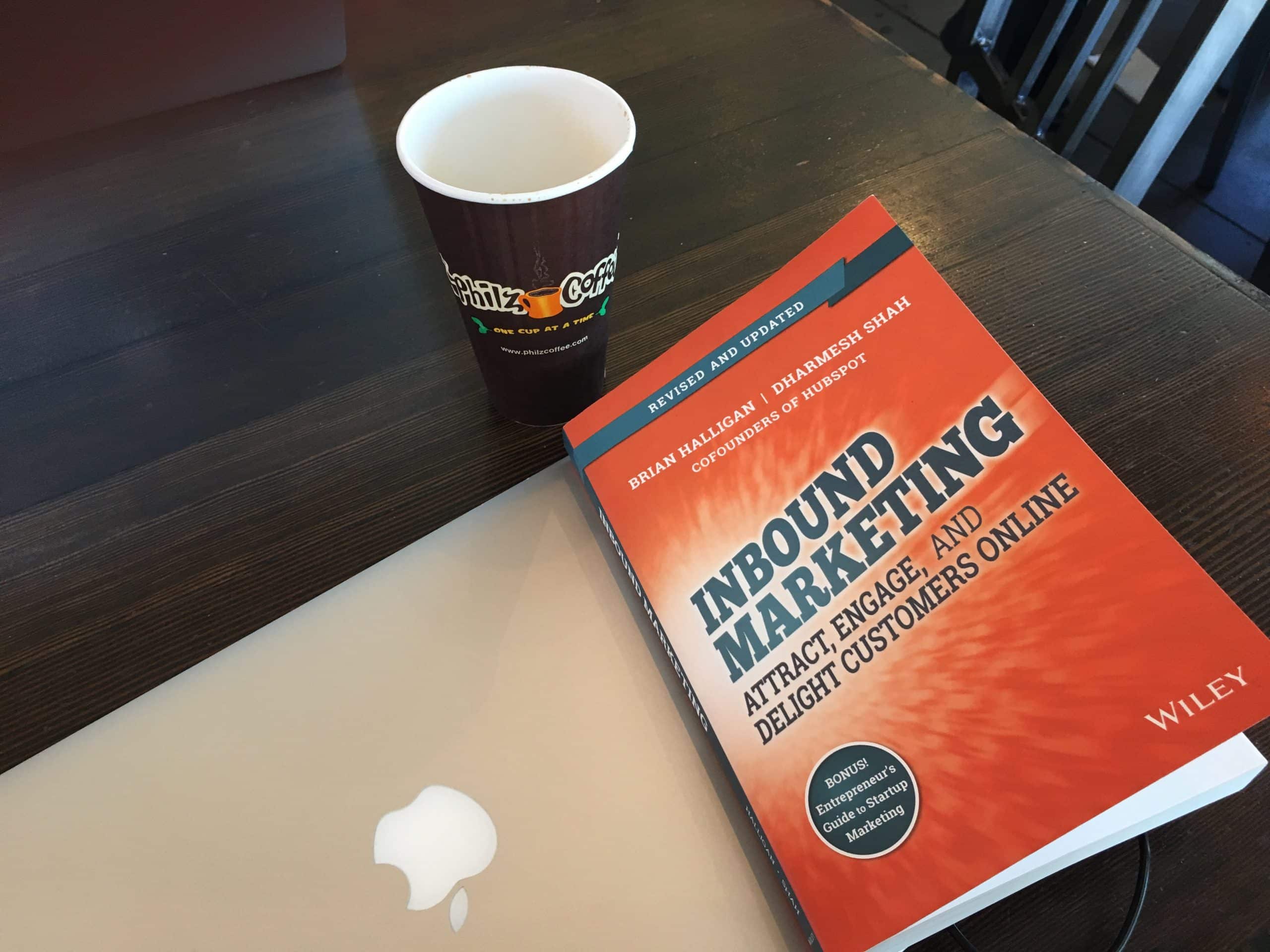
After reading The Sales Acceleration Formula by Mark Roberge, I dove into Inbound Marketing (Revised and Updated) by Brian Halligan and Dharmesh Shah. Brian and Dharmesh are the co-founders of Hubspot. Earlier this week, I flew to Washington D.C to speak at the 30th Annual FISSEA Conference at NIST. As such, I read most of the book in the air.
Inbound Marketing is divided into four parts. Below are my takeaways from each.
Part I: Inbound Marketing

Looking out over Oyster Point as we leave SFO.
Part I describes the recent shift in how customers make buying decisions. They named the trend Inbound Marketing, or how to pull people in by sharing relevant information, creating useful content and generally being helpful. Here are my takeaways from Part I:
- "You need to match the way you market your products to the way your prospects learn about and shop for your products."
- 75% of focus should be on what's happening off your website. This would be your brand, your industry and your competitors.
- Rather than redesign your website (again), instead add a blog, create lots of compelling content, and focus on Google, industry blogs and social media sites.
- As a baseline, use grader.com to measure how many social media followers and subscribers you have. Also do the same for how many inbound links you have.
- Make it as easy as possible for prospects to find your company online.
- The trick is to become as remarkable as possible to your prospects.
Part II: Get Found by Prospects
Speaking at NIST earlier this week
This was my favorite part of the book. Here are my takeaways from Part II:
- Savvy inbound marketers are half traditional marketers and half content publishers.
- Keep videos short: 2 to 3 minutes. Make it about your industry for max distribution.
- The more remarkable content you give, the more you get. Don't keep it bottled in your head.
- Consider adding a journalist, rather than a career marketer, as your next marketing hire.
- Track your Progress:
- Track how many sites link to you.
- Track the number of times people share your content on social media.
- Track the number of pages indexed by Google.
- How do you get your customers, partners and vendors to create remarkable content for you?
- Make sure people can subscribe to your bog via RSS and email (Is RSS still relevant?)
- Leave comments and interact with relevant bloggers in your space.
- Take a look at the cartoons in New York Times that parody politicians. Can you hire an artist to do something similar?
- Invite local professors, thoughtful customers, analysts and other bloggers in your industry to write guest posts on your blog.
- "As a rule of thumb, we recommend you write a minimum of once per week." (Agreed)
- From SEO standpoint, the most important part is the title.
- Find opportunities to create links from old posts to newer posts.
- "Many copywriting experts recommend that you spend half your time writing the article and half your time writing a catchy title."
- Can you figure out a way to mention famous companies or famous people in your blog titles?
- "The most frequent reason blogs fail is because the author or company writing the blog oversells their product or service."
- "A blog is a durable asset that delivers durable value that lasts." (Strongly Agree)
- Bloggers tend to like disagreement in their blog comments. It draws in more people.
- 75% of users on Google click on the organic listings, 25% click on ads.
- Google's first page of Search Engine Results capture over 89% of traffic.
- The top-ranked organic Google result gets 42% of total traffic.
- Google Rank is based on 2 things: Relevance and Authority.
- Google PageRank measures the authority of a site.
- PageRank is named after Larry Page. (did not know that but makes sense)
- "The authority of a web page is calculated based on the number of inbound links from other web pages and the authority of those pages."
- Picking the best keywords is a balance of relevance, search volume, and difficulty.
- The earlier your keywords appear in your page title, the more weight they carry.
- Use a single H1 header on each page, then multiple H2 and H3 headers.
- The most important off-page factor is getting more inbound links.
- "Links that have your desired keywords in the anchor text are the most valuable to you in terms of ranking of those keywords."
- If an SEO technique is not improving the experience for a user and it can be detected by a human, it's a bad idea.
- Search engines love frequently updated content
- Google is now excellent at detecting natural content versus computer-generated rubbish.
- To maximize your reach, have a presence where people are spending their time. People are spending a lot of time on Facebook.
- Average age of a Facebook user is 41.
- LinkedIn Groups are powerful.
- Create a LinkedIn Group that focuses on your industry. (Great Idea: HIPAA Compliant Email LinkedIn Group)
- As a LinkedIn Group admin, you can 'pin' posts.
- Brian and Dharmesh are big believers in Twitter.
- Search for your company on Twitter to stay on top of your brand.
- Stay away from using robots to build your Twitter followers.
- Brand journalism: Hiring journalists to be in-house content creators.
- Visual Communications: Design-heavy content that quickly conveys a lot of information.
- What's something your staff does repeatedly to demonstrate value to prospects? Can this be automated into a free marketing tool? (Paubox Secure Email Checker)
- It's critical that your free marketing tool include a step to move the prospect through your marketing funnel.
- If a tool isn't working, shut it down. Don't waste further time/resources on it.
- Inbound marketing is about iterating and improving.
- Create and launch a promotional campaign around your marketing tool.
Part III: Converting Customers
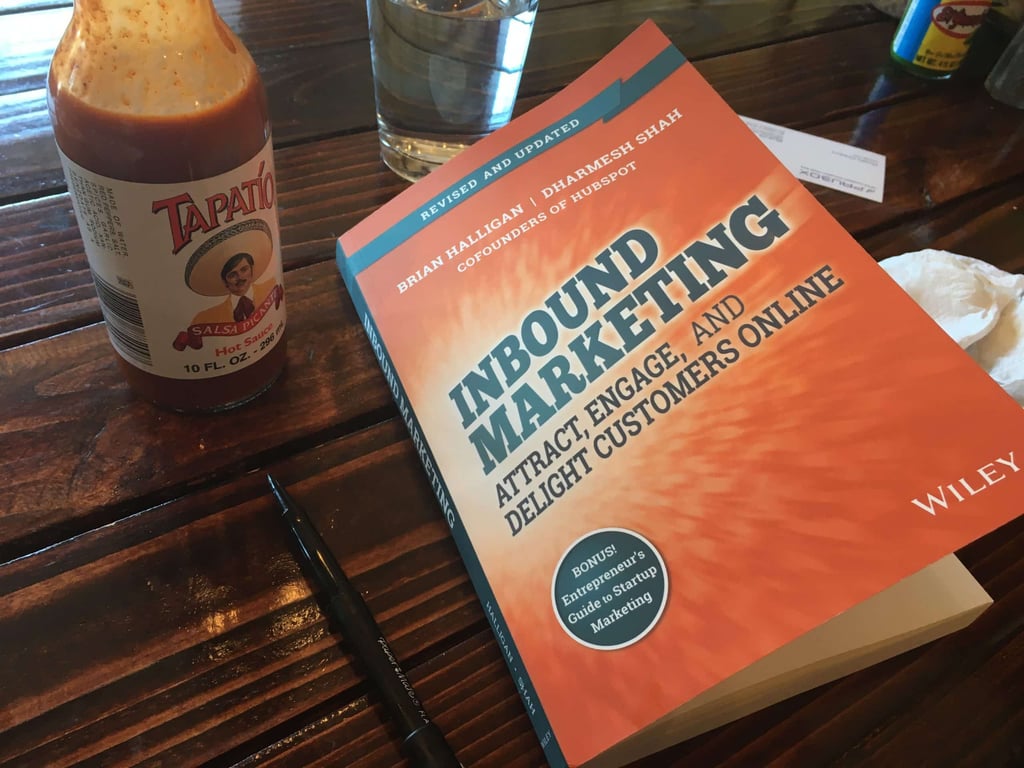
Here are my takeaways from Part III:
- It's important to give prospects a variety of ways to engage with your company.
- "Think about the potential action a site visitor can take to further engage with you when he or she lands on any page within your website."
- "We can't stress enough the importance of a call-to-action."
- Good calls-to-action: Giving users helpful information so they can do their jobs better or helping them become more valuable at work.
- The CTA often involves access to more remarkable content: Webinars, White papers, reports, an ebook, research studies, free trial, or a 30 minute expert consultation.
- The CTA should sit above the fold. Don't make the user scroll to see it.
- Every page on your site should have a CTA, not just the homepage and landing pages.
- The CTA should begin with a verb and tell the visitor what action to take. Don't make them think!
- "Contact Us" is a very low performing CTA. Stop using it as soon as possible.
- Aim for at least 1% visitor to conversion rate on untargeted traffic. Over 5% is very good.
- A good landing page quickly conveys value and builds trust.
- The landing page has only one function: To get people to fill out your form.
- To increase trust, have a clear privacy policy explaining what you will and what you will not do with people's information.
- Once a prospect fills out a form, send them a confirmation email with a further CTA to continue pulling them along the funnel.
- You should get at least a 15% conversion rate on landing pages. Over 50% is excellent.
- Think of landing pages as continuous experiments with testing and tweaking.
- Lead Nurturing: Maintain ongoing communication with leads so that when they're ready to buy, you are top of mind.
- Get lead creation going first before focusing on lead nurturing.
Part IV: Make Better Decisions
 Almost back to SFO
Almost back to SFO
Here are my takeaways from Part IV:
- Eliminate outdated outbound marketing tactics and focus instead on more productive marketing channels.
- On average, inbound leads are 61% cheaper than outbound marketing leads.
- "The low yield and low ROI campaigns should be replaced, even if they are sacred cows." (trade shows)
- Cross off the bottom two channels and add two new inbound channels.
- Hire Digital Citizens, not Digital Tourists.
- A good skill to have in-house is someone who can create remarkable video content. (Agreed)
- What gets measured gets done.
- Jack Welch (legendary GE CEO) spent 50% of his time on talent acquisition, evaluation and development.
- Jack Welch's four criteria: Energy, Energizers, Edge and Execution.
- When shopping for a PR agency, run their website through Website Grader.
- PR Agencies should: Increase your backlinks and increase your brand mentions online.
- It's important to see how you are doing relative to your competitors over time.
- SiteAlerts looks legit.
SEE ALSO: Our Takeaways from The Sales Acceleration Formula
SEE ALSO: From Impossible to Inevitable: Chapters 1 – 8
SEE ALSO: We’re Riding The Third Wave
Subscribe to Paubox Weekly
Every Friday we'll bring you the most important news from Paubox. Our aim is to make you smarter, faster.



 Hoala Greevy
Hoala Greevy
